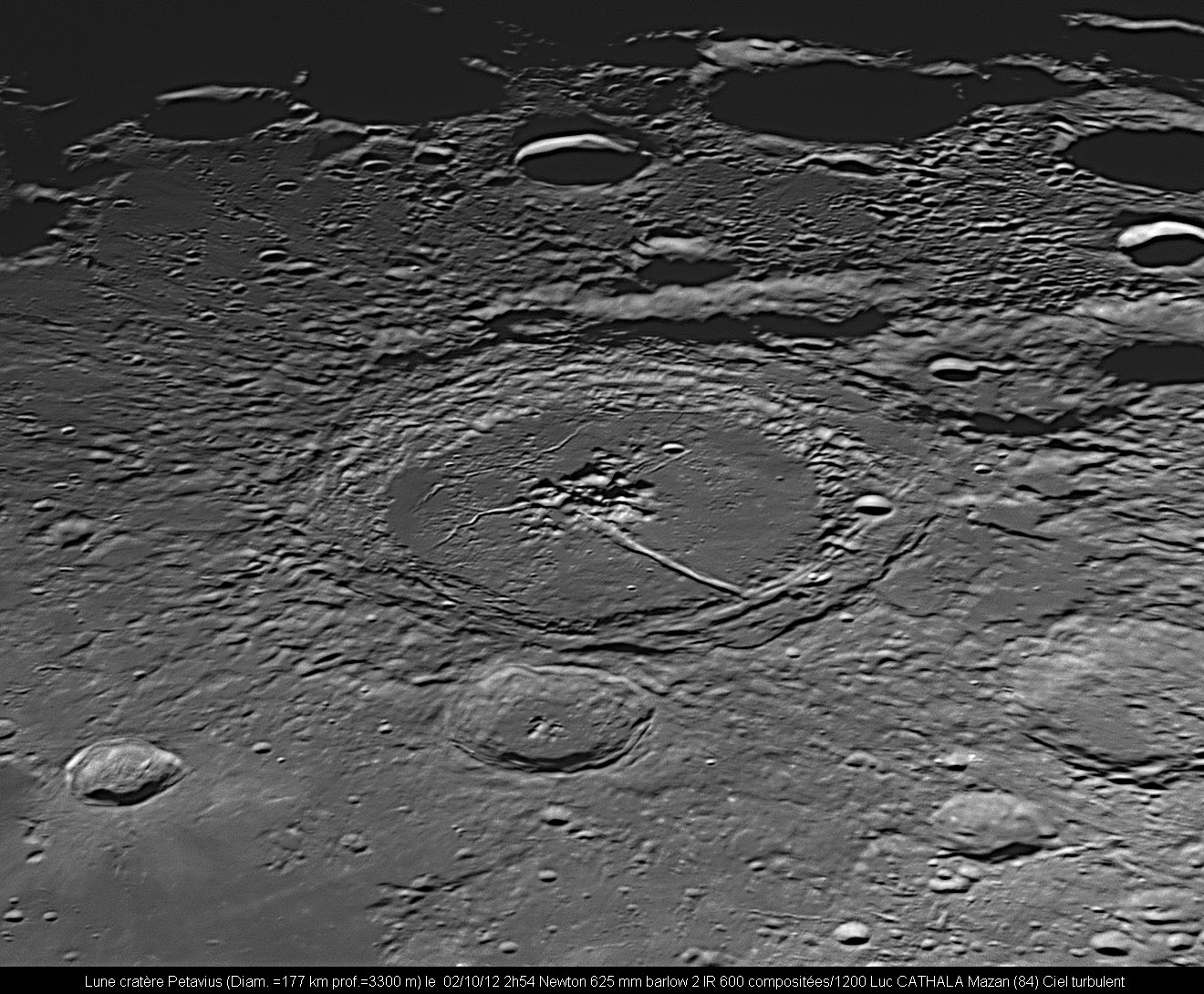Difference between revisions of "October 9, 2012"
| Line 25: | Line 25: | ||
Rükl plate [http://the-moon.wikispaces.com/R%C3%BCkl+59 59]<br /> | Rükl plate [http://the-moon.wikispaces.com/R%C3%BCkl+59 59]<br /> | ||
<br /> | <br /> | ||
| + | <p><b>Yesterday's LPOD:</b> [[October 8, 2012|Tilted, Fractured And Ashed]] </p> | ||
| + | <p><b>Tomorrow's LPOD:</b> [[October 10, 2012|Paradise From Paris]] </p> | ||
<hr /> | <hr /> | ||
| − | |||
| − | |||
| − | |||
| − | |||
| − | |||
| − | |||
| − | |||
| − | |||
| − | |||
| − | |||
| − | |||
| − | |||
Revision as of 11:25, 7 February 2015
Beyond the Rim

image by Luc Cathala, Mazan in Vaucluse in France.
Turbulence was rather strong when Luc captured this image, but as seen above the results aren't too bad.
This lighting emphasizes features outside the rim, from the flat areas to the south (right), crater ejecta ridges
to the north, and scattered small depressions everywhere. The comparison between the areas north and
south of Petavius is striking. The southern rim looks lower but the LRO QuickMap altimetry shows that it
is as much as 1000 m HIGHER than the north. I was ready to interpret all the flat material as impact melt,
with the low southern rim having slumped and thus being consistent with a projectile traveling from north
to south. But now I don't know. The broad flatness of the southern rim has long been and remains a mystery.
If Petavius were formed by an oblique impact would that in any way help explain the huge radial trench from
the wall to the central peak?
Chuck Wood
Technical Details
October 2nd 2012 local 2h54, with a 625 mm (diameter) F/D 4.37 newtonian telescope + barlow 2 + Filter
685 IR with a Point grey Flea 3 camera. 600 pictures stacked over 1200 with Autostackker 2 and treated
by wavelettes with Registax 6.
Related Links
Rükl plate 59
Yesterday's LPOD: Tilted, Fractured And Ashed
Tomorrow's LPOD: Paradise From Paris



